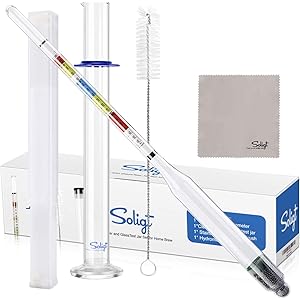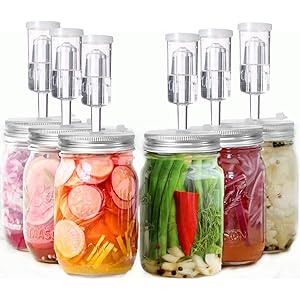Understanding Yeast and Its Role in Fermentation
Yeast is a crucial microorganism in the fermentation process, responsible for converting sugars into alcohol and carbon dioxide. When you add apple juice to yeast, you introduce a source of natural sugars, primarily fructose and glucose, which the yeast can metabolize. This process not only produces alcohol but also contributes to the flavor profile of the final product, making it essential in various applications such as cider production and baking.
The Composition of Apple Juice
Apple juice is rich in sugars, vitamins, and organic acids, making it an ideal substrate for yeast fermentation. The high sugar content provides the necessary energy for yeast growth and activity. Additionally, the presence of nutrients such as vitamins B and C, along with minerals, supports yeast health and enhances fermentation efficiency. Understanding the composition of apple juice helps in predicting how yeast will behave when introduced to this environment.
Fermentation Process When Apple Juice is Added to Yeast
When apple juice is added to yeast, the fermentation process begins as the yeast consumes the sugars present in the juice. This process typically starts with the yeast cells absorbing the sugars and converting them into ethanol and carbon dioxide through anaerobic respiration. The rate of fermentation can vary based on factors such as temperature, yeast strain, and the concentration of sugars in the apple juice.
Impact of Temperature on Fermentation
The temperature at which fermentation occurs plays a significant role in the activity of yeast. Generally, warmer temperatures can accelerate fermentation, leading to faster alcohol production. However, excessively high temperatures may stress the yeast, resulting in off-flavors and reduced fermentation efficiency. It is essential to maintain an optimal temperature range to ensure a successful fermentation when adding apple juice to yeast.
Yeast Strains and Their Influence on Flavor
Different strains of yeast can produce varying flavors and aromas during fermentation. When apple juice is added to yeast, the choice of yeast strain can significantly influence the final taste of the product. For instance, some yeast strains may enhance fruity notes, while others may impart spicy or floral characteristics. Understanding the relationship between yeast strains and flavor profiles is crucial for achieving the desired outcome in fermentation.
Get more content like this!
Sign up to receive updates and new terms first hand.
Carbon Dioxide Production and Its Effects
As yeast ferments the sugars in apple juice, carbon dioxide is produced as a byproduct. This gas can create natural carbonation in beverages like cider, contributing to their effervescence. In baking, the carbon dioxide produced by yeast helps dough rise, resulting in a light and airy texture. The amount of carbon dioxide generated depends on the sugar concentration and the fermentation conditions.
Potential Alcohol Content from Fermentation
The addition of apple juice to yeast can lead to the production of alcohol, which is a key component in many fermented beverages. The potential alcohol content depends on the initial sugar concentration in the apple juice and the efficiency of the yeast strain used. Typically, a higher sugar content results in a higher alcohol yield, making it essential to measure and control sugar levels for desired alcohol content.
Monitoring Fermentation Progress
Monitoring the fermentation process is vital for ensuring the desired outcome when adding apple juice to yeast. Various methods can be employed, such as measuring specific gravity with a hydrometer or observing the production of bubbles in the fermentation vessel. These indicators help determine when fermentation is complete and when the product is ready for bottling or further processing.
Common Challenges in Fermentation
Fermentation can present several challenges, especially when adding apple juice to yeast. Issues such as stuck fermentation, off-flavors, or contamination can arise. Stuck fermentation occurs when yeast becomes inactive before all sugars are converted, often due to high alcohol levels or nutrient deficiencies. Proper management of fermentation conditions and yeast health can help mitigate these challenges.
Applications of Yeast Fermentation with Apple Juice
The fermentation of apple juice with yeast has numerous applications, particularly in the production of alcoholic beverages like cider and apple wine. Additionally, it can be utilized in baking to create flavorful breads and pastries. Understanding the science behind yeast fermentation allows producers to innovate and create unique products that appeal to consumers.




